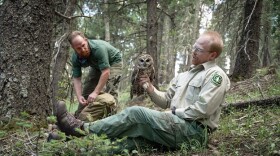We've all seen spiders: patient little creatures tucked into corners or stretched between tree branches, waiting for dinner to land in their traps.
They don't always get the best PR, and many of us would much rather avoid them.
A recent study from researchers in upstate New York found that some use their webs not only to catch prey, but also to hear it.
Those classic circular webs seen in storybooks like "Charlotte's Web," movies like "Coraline" and in Halloween decorations are woven by a certain family of spiders called "orb-weavers.”
Instead of relying on their ears, orb-weavers sense the world through vibrations. Like strums to a guitar string, waves hit the web and send ripples along the threads. The spider senses these through sensors in its feet — called tarsi — which monitor the threads, making the web an extension of its body.
The web becomes a simple yet highly effective hearing device that helps the spider detect everything from buzzing wings to approaching danger.
There are more than 3,000 species of orb-weaver spiders around the globe. The potential for countless, silent listeners hanging out in the shadows and tuning in to the world around us is high.
So the next time you swipe away a web or walk through one on your morning walk, pause for a second and maybe whisper an apology… because someone could have been listening.
This Earth Note was written by Octavio Alcocer Duran and produced by KNAU and the Sustainable Communities Program at Northern Arizona University.






